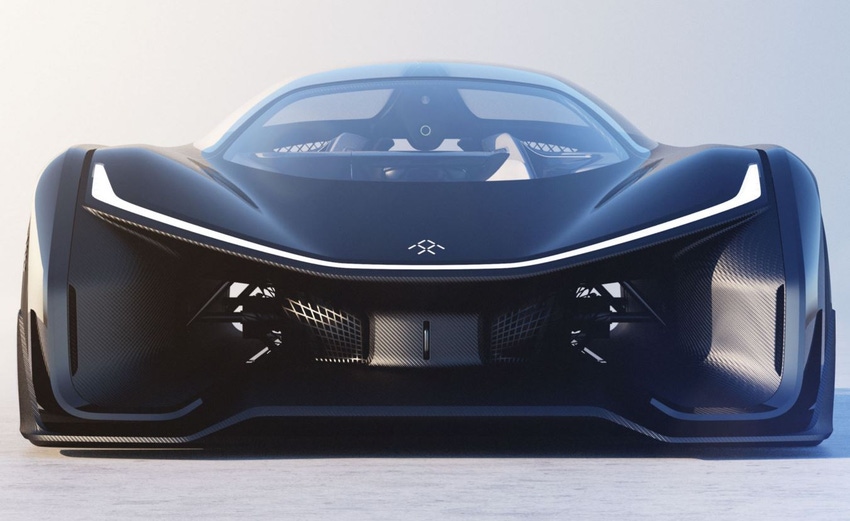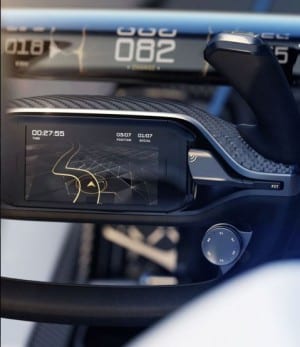AT&T, Ericsson, Ford, Volvo and BMW have revealed new strides taken in driving in-car connectivity innovations, while Faraday Future has announced its new, 1000-horsepower electric concept car.
January 6, 2016

CES 2016 is in full swing in Las Vegas and a raft of connected car announcements have been flowing out of the show. AT&T, Ericsson, Ford, Volvo and BMW revealed new strides taken in driving in-car connectivity innovations, while Faraday Future has announced its new, 1000-horsepower electric concept car.
Starting with Ford and the car maker has delivered a range of updates to its in-car digital system, “SYNC”, to accommodate more IoT-ish features.
Firstly it has been collaborating with Amazon to deliver voice-command interoperability between SYNC Applink, and home automation systems Amazon Echo and Wink. Using Applink, Ford reckons drivers can now automate certain processes with internet-connected devices in the home, such as lights, automatic garage doors or home security systems. Ford says voice activation will work for Amazon Echo, while Wink users will be able to control home-devices via the car’s dashboard.
Drones have also been something of a talking point at CES after yesterday’s announcement of Intel’s acquisition of drone manufacturer Ascending Technologies; and Ford has also announced a partnership with drone specialist DJI to equip emergency service vehicles with real-time land surveillance based on data collected from drones flying overhead. A link between Ford’s SYNC system and drones will, apparently, allow the Ford F-150 to serve as a base-station for recon drones after disasters and in emergency situations such as tsunamis, floods or earthquakes.
Other news from Ford includes in-car app syncing, as well as 4G LTE connectivity with AT&T. Most significantly perhaps, it has allowed new Ford models using SYNC 3 systems to integrate with Apple’s CarPlay or Android’s Auto to allow voice control of application functionality from the driver’s seat of the car. Users could potentially use the service to find the next gas (petrol) station by voice, or find local on-going events, restaurants or nightlife based on the vehicle’s location.
AT&T’s also been busy in the connected car markets after Ericsson confirmed its partnership with the telco to target wifi-enabled connected cars. Ericsson has said it is focussing on delivering wifi solutions for tier 1 automotive manufacturers. According to the vendor, the solution will allow customers to purchase data packages and activate wifi hotspots within their vehicle, and claims that having a hotspot is the number one feature that US customers are willing to purchase for their car.
Ericsson has also announced it is working with Volvo to develop media streaming products for autonomous vehicles. With a number of self-driving cars being tested in North America in 2015 and 2016, real-world commercial availability is likely to be hitting the streets in the next few years. It therefore stands to reason that additional connectivity and entertainment systems be in place by that point, and Volvo has said it’s working on “intelligent, high bandwidth, streaming capabilities with its technology partner Ericsson”.
Meanwhile, in the slightly more ethereal subgenre of connected cars, BMW has gone all out with a quite frankly outrageous concept version of its i8 with the I Vision Future Interaction Concept. While being a long way from reality, it’s fitted with gesture-based dashboard control of in-car features and cloud-based services; it will allegedly be able self-drive down the highway (motorway), and will feature an interactive holographic heads up display on the dash. BMW has also said the car will feature IoT control over smart home devices, and capable of highly personalising user preference based on frequent interaction: “The intelligent Open Mobility Cloud of the BMW Group connects networked systems such as a BMW i3 and a Smart Home with personal end devices like smart phone or smart watch,” said the manufacturer. “The Open Mobility Cloud networks the correct information and functions, and uses intelligent control to allow complex processes to be started automatically, without their being requested or having to be initiated with an app.”
The only limitation, according to BMW, is the telecoms infrastructure upon which the car’s internal systems rely.
 Finally in the connected car realm, Faraday Future (FF) has announced its rather Batmobile-esque FFZERO1 electric concept car. The FF website calls the FFZERO1 a “test bed and a parallel study from which our design and engineering teams continue to draw inspiration and solutions for our future range of clean, intuitive electric vehicles”.
Finally in the connected car realm, Faraday Future (FF) has announced its rather Batmobile-esque FFZERO1 electric concept car. The FF website calls the FFZERO1 a “test bed and a parallel study from which our design and engineering teams continue to draw inspiration and solutions for our future range of clean, intuitive electric vehicles”.
Supposedly, the FFZERO1 interior will feature extremely personalised driving based on the driver’s body as well as the smartphone. Leaving aside the intriguing claim of its “zero-gravity driving experience”; FF has said the user’s smartphone can be embedded into the steering wheel (see right), from which configurations are customised, power outputs can be modified and data is visualised and interacted with in real time.
CES will be ongoing until the end of the week, and more connected car announcements are surely likely as the week continues.
About the Author(s)
You May Also Like








.png?width=300&auto=webp&quality=80&disable=upscale)


_1.jpg?width=300&auto=webp&quality=80&disable=upscale)


.png?width=800&auto=webp&quality=80&disable=upscale)